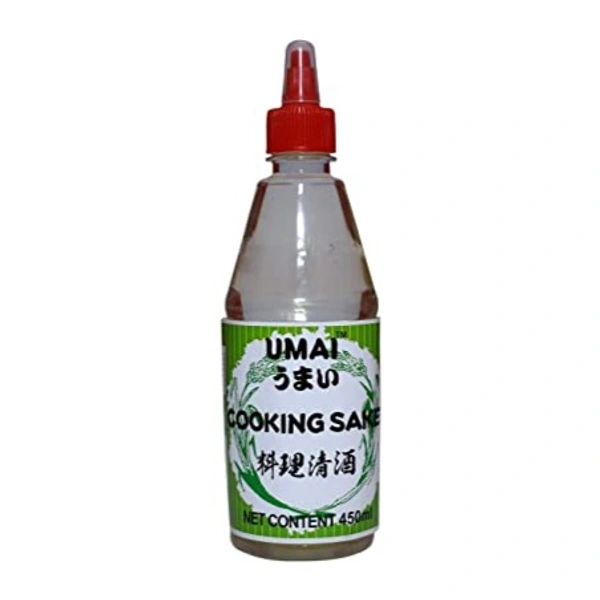
Umai Cooking Sake 450ml
Umai Cooking Sake, also known as "mirin" in Japanese cuisine, is a versatile cooking wine commonly used in Japanese cooking. Here's some information about Umai Cooking Sake:
Origin: Cooking sake is a type of rice wine that originates from Japan. It has been used in Japanese cooking for centuries and is a key ingredient in many traditional dishes.
Ingredients: Cooking sake is made from fermented rice, water, and sometimes additional ingredients like salt and sugar. It has a slightly sweet and mild flavor, making it suitable for a wide range of recipes.
Usage: Umai Cooking Sake is primarily used as a cooking ingredient rather than a beverage. It is a fundamental component in many Japanese dishes, including teriyaki sauce, tempura batter, and various stir-fry recipes. Cooking sake helps to enhance flavors, add depth to sauces, and tenderize meats and proteins.
Flavor Enhancement: Cooking sake is prized for its ability to enhance the umami (savory) flavors in dishes. It provides a subtle sweetness and depth of flavor without overpowering other ingredients.
Alcohol Content: Cooking sake typically has a lower alcohol content than regular sake intended for drinking. It is simmered to evaporate the alcohol, leaving behind the rich flavor.
Substitution: If you don't have cooking sake on hand, you can substitute it with a mixture of dry white wine and a small amount of sugar or rice vinegar to mimic the slightly sweet flavor.
Packaging: Umai Cooking Sake is commonly available in bottles of various sizes, with 450ml being a common size for home use.
When using Umai Cooking Sake in your recipes, it can help to add depth and complexity to your dishes while providing a pleasant hint of sweetness. It's a valuable ingredient in Japanese and Asian cuisine, as well as a versatile addition to various international recipes.
